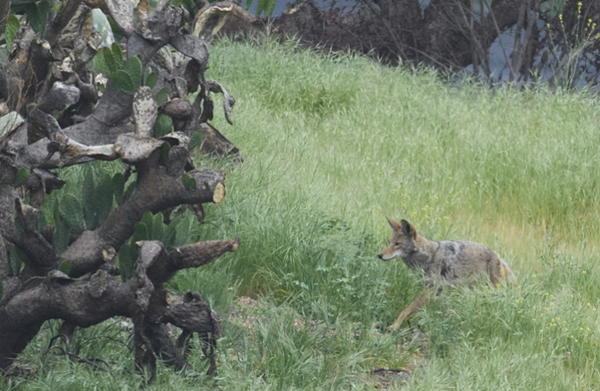
Advertisement
By The Associated Press
Apr. 25, 2025 | 08:03 AM
| LOS ANGELES
Behind the remains of a town scorched by fire, the foothills are lush with new green and filled with birdsong.
Wildlife is returning to the Eaton Fire burn area and scientists are closely tracking it four months after the Los Angeles area wildfires tore through the Angeles National Forest and destroyed hundreds of homes and businesses in Altadena.
Trail cameras installed by a group of volunteers documented the first mountain lion back in the area March 26. It was seen again as recently as two nights ago.
Ochoa first began documenting the plants and animals that live in the area known as the Chaney Trail Corridor in July 2024. She founded the Chaney Trail Corridor Project and began uploading observations on iNaturalist.
Located right behind Altadena, with a trailhead only a mile up the road from neighborhoods that were decimated during the fires, the privately owned area adjacent to Angeles National Forest land was slated for sale and development into a sports complex. Ochoa and other volunteers set up a network of trail cameras to showcase the biodiversity of the area and take “inventory of everything that was valuable.”
Much of the land was charred and barren after the fires, and the group also lost all of its cameras, watching as photos of the flames were transmitted before they went dark. But less than two months after the start of the fires, Ochoa was able to go back out and install new ones to start documenting the landscape’s recovery.
While the fires burned aggressively, they also burned unevenly, leaving patches of trees and a small oasis of greenery surrounding a stream untouched. Animals were able to seek refuge there while the rest of their home burned.
The heavy rain that came in the weeks after the fires have helped with a quick recovery.
On a recent Wednesday morning, Ochoa pointed out several charred San Gabriel oak trees — only found in Southern California — that had rampant green growth around their base. The “crown sprouting” comes from having deep and developed root systems that have helped the trees survive for hundreds of years, Ochoa said.
As she installed a newly donated trail camera, she pointed out bobcat scat and fresh deer tracks on a ridge that had burned just months before.
The group is partnering with local scientists at UCLA to do research on how bats and birds have fared after the fires as well.
(AP Photo Damian Dovarganes)
ADVERTISEMENT



